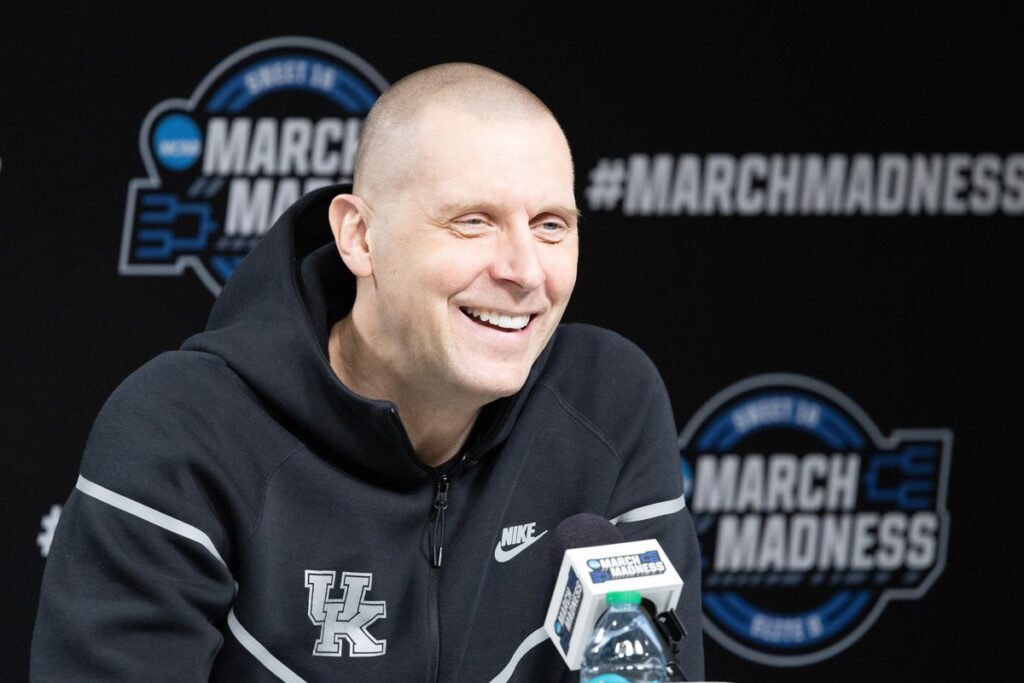
Tuesday Headlines: Kentucky Basketball May Be the Biggest NIL Spender
In recent months, college basketball’s recruiting landscape has been undergoing a profound transformation. The introduction of Name, Image, and Likeness (NIL) deals has reshaped the way programs approach roster construction, and nowhere has the impact of this new era been more keenly felt than at the University of Kentucky. According to recent reports, Kentucky Basketball may now be the biggest NIL spender in college basketball—a title that could bring both immense advantages and serious scrutiny.
The Wildcats, known for their rich basketball history and consistent success, have long been one of the most prestigious programs in the nation. However, with the dawn of NIL deals, Kentucky has embraced the opportunity to further enhance its recruiting efforts. With head coach John Calipari at the helm, the Wildcats have not only continued to dominate on the court but also seem poised to dominate off of it in ways that few other programs can match. This newfound financial advantage, however, has sparked both admiration and controversy, as rivals and critics alike begin to ask the question: Is Kentucky’s NIL spending pushing the limits of fair play?
The Rise of NIL and Its Impact on College Basketball
Before diving into the specifics of Kentucky’s involvement in NIL spending, it’s essential to understand what NIL is and how it has altered the college basketball landscape. Introduced by the NCAA in July 2021, NIL allows college athletes to profit from their personal brand by engaging in sponsorships, endorsements, and other business ventures. Prior to the ruling, athletes were prohibited from profiting off their name, image, or likeness while playing at the collegiate level. Now, players can sign contracts with companies, promote products on social media, and take advantage of other revenue-generating opportunities without losing their eligibility.
For many programs, this new dynamic has fundamentally changed how they approach recruiting. In a landscape where the highest-profile recruits are now considering not just scholarships and playing time but also financial opportunities through NIL, schools with deep pockets and a well-established brand have a distinct advantage. Kentucky, with its nationwide recognition and legacy of success, has quickly learned how to leverage its status as a powerhouse to draw in top talent.
Kentucky’s Dominance in NIL Spending
Kentucky’s commitment to NIL spending has been a topic of growing conversation within the college basketball community. The Wildcats’ ability to secure some of the nation’s best recruits in recent years has been attributed, in part, to their expansive NIL deals, which are reported to be among the largest in college sports.
While other programs, such as Duke, Kansas, and Michigan, have also been active in NIL, Kentucky’s financial clout and reputation have positioned them at the top of the NIL spending ladder. The Wildcats have reportedly worked with a variety of NIL collectives, third-party agencies, and local businesses to create lucrative opportunities for their players. These opportunities include everything from social media sponsorships with global brands to local partnerships that allow players to promote Kentucky-related businesses.
One of the most high-profile examples of Kentucky’s NIL strategy came in the recruitment of [Insert Top Recruit Name], a highly coveted five-star prospect who ultimately chose Kentucky over rival programs. The recruit’s decision was influenced by the promise of significant NIL opportunities, including endorsement deals with major brands. The Wildcats’ ability to offer a combination of high-level basketball competition, national exposure, and financial incentives made them an irresistible option.
The Wildcat Way: Calipari’s Strategic Embrace of NIL
John Calipari, Kentucky’s legendary head coach, has long been known for his innovative approach to coaching and recruiting. While he is best known for sending dozens of players to the NBA, Calipari has also been quick to embrace the opportunities that NIL offers. The coach has made no secret of the fact that he believes players should benefit financially from their time in college basketball, especially given the substantial revenue generated by college athletics.
In recent interviews, Calipari has emphasized that NIL is not just a tool for recruiting, but also an important element of player development. “These players are not just basketball players—they are entrepreneurs in the making,” Calipari said during a press conference. “I’m here to help them on the court, but I’m also here to help them build their brands and set them up for success beyond college.”
Calipari’s forward-thinking approach has been a key factor in Kentucky’s ability to secure some of the most sought-after recruits. By positioning the Wildcats as a place where athletes can thrive both on the court and off of it, Calipari has given Kentucky an edge over other programs that are still adjusting to the changing landscape.
In addition to offering individual NIL deals to his players, Calipari has also emphasized the importance of collective NIL efforts, where groups of players can pool their resources and benefit from joint sponsorships. Kentucky’s NIL collectives—organizations that help facilitate partnerships between athletes and businesses—have been instrumental in attracting high-profile recruits.
The Financial Power of the Wildcats’ Brand
One of the reasons why Kentucky is able to be such a significant player in the NIL landscape is the immense financial power of its basketball program. Kentucky is one of the richest programs in college sports, thanks in part to the enormous revenue generated by its basketball program. Rupp Arena, the home of the Wildcats, regularly hosts sell-out crowds, and the Wildcats’ basketball-related merchandise is a significant revenue stream.
With this kind of financial backing, Kentucky has been able to create an NIL environment that rivals the professional sports world in terms of financial rewards. Top recruits understand that playing for Kentucky means not only exposure on the national stage but also the chance to earn significant sums of money during their college careers. This financial allure has made Kentucky an appealing destination for top prospects, especially those who are looking to build their brand early in their careers.
The combination of NIL opportunities and Kentucky’s established reputation as a top-tier basketball program has given the Wildcats a distinct advantage over many of their competitors. Players who might have previously considered other schools are now leaning toward Kentucky, knowing they will have access to unparalleled NIL opportunities that can supplement their scholarships.
The Ethical Debate: Is Kentucky’s NIL Spending Fair?
While Kentucky’s success in securing top recruits through NIL spending has garnered praise from some quarters, it has also sparked ethical debates within the college basketball community. Critics argue that Kentucky’s aggressive NIL strategy may be crossing a line when it comes to fair play and the spirit of college athletics.
Some rival programs have accused Kentucky of using NIL as a recruitment tool to effectively “buy” top talent. These critics contend that the vast amounts of money being offered to Kentucky players through NIL deals are pushing the limits of what college athletics should be about—competition, development, and education. Some worry that Kentucky’s spending power is creating an uneven playing field, with smaller programs unable to compete financially for top-tier recruits.
Moreover, there are concerns about the long-term implications of NIL spending on the integrity of college basketball. If the system becomes too focused on financial incentives, there are fears that the sport could lose its sense of amateurism. There is a growing belief that the increasing importance of NIL deals will shift the focus away from developing well-rounded players and toward cultivating celebrity athletes who are more interested in making money than in playing the game for the love of it.
Some programs have raised questions about whether NIL should be regulated more strictly by the NCAA to ensure that financial incentives don’t overshadow the student-athlete experience. The debate surrounding NIL and its role in recruitment is ongoing, and it’s clear that Kentucky’s position as a top spender is likely to be a key point of contention.
The Future of NIL in College Basketball: Will Kentucky Maintain Its Edge?
As NIL spending continues to grow, the question on many people’s minds is whether Kentucky will maintain its position as the biggest NIL spender in college basketball. Other programs are likely to follow Kentucky’s lead, especially as the financial rewards for top players become increasingly important in the recruiting process. If more schools begin to offer similar NIL deals, Kentucky’s financial advantage could diminish over time.
In the meantime, however, the Wildcats appear to be in an enviable position. With the continued leadership of Calipari and the full support of the university’s athletic department, Kentucky seems poised to capitalize on the NIL revolution for the foreseeable future. For recruits, the chance to play for one of the best college basketball programs while also benefiting financially is an attractive proposition, and Kentucky will continue to be a primary destination for top talent.
For other programs trying to compete with Kentucky, the challenge will be balancing financial opportunities with the core principles of college athletics. The future of NIL in college basketball is still in flux, but one thing is clear: Kentucky is at the forefront of this new era, and its influence is likely to shape the recruiting landscape for years to come.







